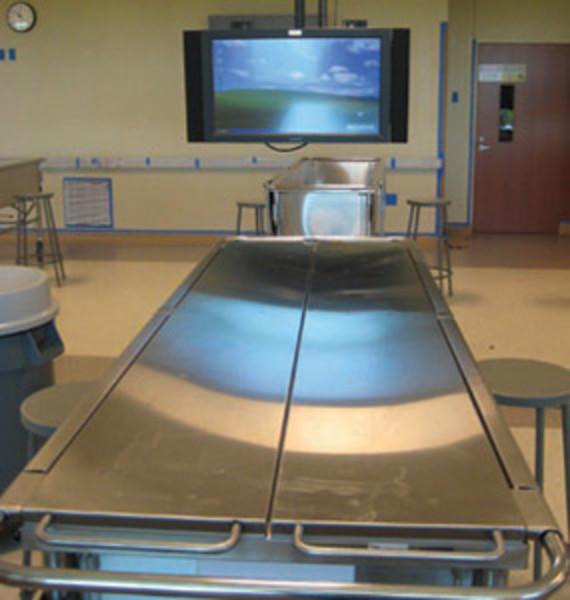Commercial vs. Consumer Panels
Once again, I feel compelled to visit what is rapidly becoming a personal crusade: the battle of commercial AV and digital signage integrators to justify the use of commercial-grade equipment. It seems to be an issue that is cut and dried, but with every new generation of consumer flat panel each manufacturer introduces, the features get slicker, the displays get thinner and more and more appealing to everyone.
There used to be an extreme gulf between consumer-grade and commercial-grade panels. Consumer grade were sleeker looking, with more attention to the appearance of the bezel and stand, the depth of the product, the “look” of the remote, what the on screen menus looked like, and how easy they were to use. Commercial product, by comparison, was very simplistic, maybe even crude in comparison. But commercial displays have caught up; new LED powered commercial panels from companies like Samsung now bring that sexy thin profile to the commercial realm. And they are frequently decked out in really deluxe looking anodized aluminum, making them no slouch in the looks department. Seems like that is leveling out. So we need to turn elsewhere for differences.
In the realm of features and picture quality, the differences used to be great there, as well. Serial inputs, wide acceptance of PC input resolutions, large arrays of input options, calibration capability, and other similar advanced features have been the norm on commercial-grade panels, but were largely absent on anything but the highest priced “enthusiast” type consumer product. Here, too, parity is now a way of life. While one may make an argument that there is still an appearance difference between commercial and consumer, but they are definitely close. Features, though, are now pretty much standard across the board, frequently even using the same interfaces. This one comes out as a wash.

That leaves the two truly great differences that even today I still base my arguments for commercial over consumer on: durability and warranty. There just is something lacking in most consumer-grade panels when you compare them to their commercial cousins. A living room is a pretty benign environment in anyone’s books. Controlled climate, clean, and not subject to extremes. Even power is much more “safe” in the home, while still tending to poor quality in most areas. Now let’s take that consumer panel into a commercial environment. Issues like impact resistance (still the strong suit of plasma, by the way — sorry LCD!), cooling and dust management, and, most importantly, robust power supplies that can take a spike that would leave most consumer-grade home theater gear a puddle of rapidly cooling slag without wrecking the whole panel. This is still a serious concern! Admittedly, I have to give a point to the pro-consumer-grade crowd here, in a lot of well-controlled retail and office environments, provided there is good power conditioning on the display, this one is less of an issue now. All right, I concede there, but warranty is still incredibly serious! And still the ultimate differentiator, between the two types of product.
That leaves the two truly great differences that even today I still base my arguments for commercial over consumer on: durability and warranty. There just is something lacking in most consumergrade panels when you compare them to their commercial cousins. A living room is a pretty benign environment in anyone’s books. Controlled climate, clean, and not subject to extremes. Even power is much more “safe” in the home, while still tending to poor quality in most areas. Now let’s take that consumer panel into a commercial environment. Issues like impact resistance (still the strong suit of plasma, by the way -- sorry LCD!), cooling and dust management, and, most importantly, robust power supplies that can take a spike that would leave most consumer-grade home theater gear a puddle of rapidly cooling slag without wrecking the whole panel. This is still a serious concern! Admittedly, I have to give a point to the pro-consumer-grade crowd here, in a lot of well-controlled retail and office environments, provided there is good power conditioning on the display, this one is less of an issue now. All right, I concede there, but warranty is still incredibly serious! And still the ultimate differentiator, between the two types of product.
Let’s leave you with a final consideration. When a commercial product is installed in a commercial location, any major manufacturer will give you a 2-to-3-year on-site warranty. On a consumer product, the warranty is normally null and void when installed commercially. If you’re truly lucky, it might get 90 days over the counter. This is a serious risk on the part of the customer. These displays, while affordable due to ever-dropping prices, are not cheap. And replacing them frequently due to power supply problems, heat issues, or dust failures is an expensive proposition. A commercial display has a rated life in years, out in the field. Even with the incredible improvements in consumer equipment, the same just cannot be said. Perhaps one day a company will step up and unify the two product lines, but until this happens, the bottom line is always just that, at the bottom line. A commercial-grade panel is a safe bet, and will not incur any unexpected costs throughout its life. Can a thin profile and shiny finish replace peace of mind? And is a small price savings worth potential replacement?
